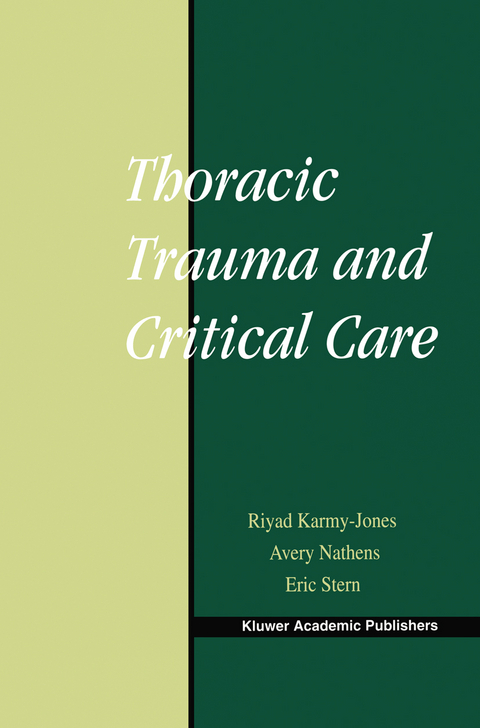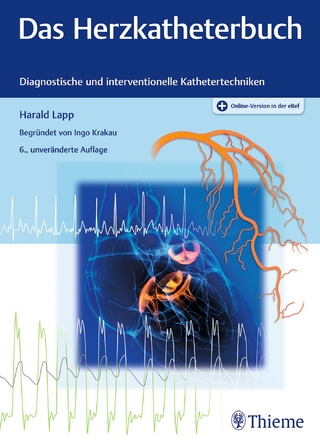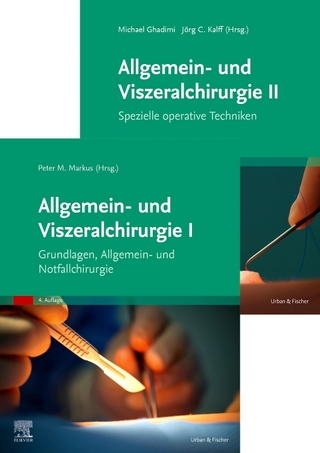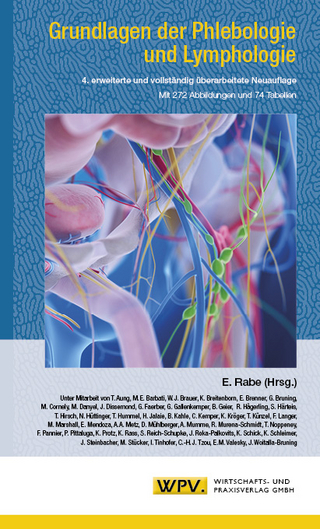
Thoracic Trauma and Critical Care
Springer-Verlag New York Inc.
978-1-4020-7215-4 (ISBN)
Transmediastinal gunshot injuries present the risk of immediately life threatening injuries. Stable patients have been evaluated by a combination of esophageal swallow and endoscopy, aortography and bronchoscopy. There is an increasing trend favoring CT scan. Unstable patients require immediate exploration, being prepared to enter both hemi-thoraces. Selected References: * Bergsland J, Karamanoukian HL, Soltoski PR, Salerno TA. Single suture forcircumflex exposure in coronary artery bypass grafting. Ann Thorac Surg.1999;68: 1428-1430. * Fedalen PA, Bard MR, Piacentino V, et al. Intraluminal shunt placement and off- pump coronary revascularization for coronary artery stab wound. J Trauma 200 1;50: 133-135 * Hanpeter DE, Demetriades D, Asensio JA, Berne TV, Velmahos G, Murraygunshot wounds. J Trauma 2000;49(4):689-695. * MacPherson D. Bullet Penetration: Modeling the dynamics and the incapacitation resulting from wound trauma. Ballistics Publications, EI Segundo, CA, 1994 * Wall MJ, Soltero E. Damage control for thoracic injuries, Surg Clin North AmI997;77(4):863-878.
* Rozycki GS, Feliciano DV, Oschner MG, Knudson MM, Hoyt DB, Davis F, Hammerman D, Figueredo V, Harviel JD, Han DC, Schmidt JA. The role ofUltrasound in patients with possible penetrating cardiac wounds: aProspective multicenter study. J Trauma 1999; 46(4):543-552. * Roussseau H, Soula P, Bui B, D'Othee BJ, Massabuau P, Meites G, Concina P,Mazzerolles M, Joffre F, Otal P. Delayed treatment of traumatic ruptureof the thoracic aorta with endoluminal covered stent. Circulation 1999 Feb2; 99(4): 498-504.
1. Underlying Principles.- 1.1 Trauma Scores: Recent Advances.- 1.2 Care of the Multiple Injured Patient with Thoracic Trauma.- 1.3 Assessing adequacy of resuscitation.- 1.4 Reperfusion Injury.- 2. Thoracostomy, Thoracoscopy and Thoracotomy.- 2.1 Tube Thoracostomy.- 2.2 Incisions and approaches.- 2.3 ER-Thoracotomy.- 2.4 Urgent Non-ER Thoracotomy.- 2.5 Abbreviated Thoracotomy; The Evolving Role of Damage Control in Thoracic Trauma.- 2.6 Transmediastinal Gunshot Wounds.- 2.7 Role of Thoracoscopy in Chest Trauma.- 2.8 Management of Retained Hemothorax.- 2.9 Thoracotomy for Medical Arrest.- 3. Pulmonary and Airway Emergencies.- 3.1 Lung Injuries.- 3.2 Tracheo-bronchial Injuries.- 3.3 Traumatic Asphyxia.- 3.4 Pulmonary Blast Injury.- 3.5 Inhalation Injury.- 3.6 Thoracic Missile Embolism and Retained Bullets.- 3.7 Radiological Evaluation of Parenchymal Injuries.- 3.8 Airway Obstruction.- 3.9 Complications of Lung Transplantation.- 3.10 Air Embolism.- 3.11 Massive Hemoptysis.- 3.12 Tracheo-Inominant Artery Fistula.- 3.13 Hemoptysis Following Catheter Induced Ruptures of the Pulmonary Artery.- 3.14 Re-expansion Pulmonary Edema.- 3.15 Postpneumonectomy Pulmonary Edema.- 3.16 The Sonographic Detection of Pneumothoraces.- 4.0 Chest Wall Trauma.- 4.1 Pulmonary Contusion and Flail Chest: Medical Management.- 4.2 Reconstruction of Complex Chest Wall Defects.- 4.3 Chest Wall Burns.- 4.4 Chest Wall Hernia.- 4.5 Diaphragmatic Injuries.- 5.0 Esophageal Emergencies.- 5.1 Caustic Injuries.- 5.2 Esophageal trauma and perforation.- 6.0 Cardiovascular Emergencies.- 6.1 Blunt Cardiac Injury.- 6.2 Blunt Cerebrovascular Trauma.- 6.3 Penetrating Cardiac Injury.- 6.4 Management of Great Vessel Injury.- 6.5 Blunt Aortic Injury.- 6.6 Operative Management of Blunt Thoracic Aortic Injuries.- 6.7 Non-operative Management of Blunt Thoracic Aortic Injury.- 6.8 Blunt Aortic and Great Vessel Injuries: The Role of Endovascular.- 6.9 Pharmacological Support of Shock.- 6.10 Intra-aortic Balloon Pump.- 6.11 Cardiopulmonary Bypass.- 6.12 Deep Venous Thrombosis: Prophylaxis and Treatment in the Critically Ill and Injured Patient.- 6.13 Management of Acute PE.- 6.14 Post-Operative Complications of Cardiovascular Surgery.- 7.0 Infections in the Critical Care Setting.- 7.1 Diagnosis of ventilator associated pneumonia.- 7.2 Empyema.- 7.3 Necrotizing pneumonia.- 7.4 Surgical Management of Complex Parenchymal Infections.- 7.5 Descending Necrotizing Mediastinitis.- 8.0 Respiratory Intensive Care.- 8.1 Ventilation: An Overview.- 8.2 Adult Respiratory Distress Syndrome.- 8.3 High Frequency Ventilation.- 8.4 Pressure Control-Inverse Ratio Ventilation.- 8.5 Prone Ventilation in the Acute Respiratory Distress Syndrome.- 8.6 ECMO in the surgical patient.- 8.7 Liquid Ventilation.- 8.8 The role of Nitric Oxide in Sepsis and Respiratory Failure.- 8.9 Evaluation and Management of Persistent Air Leaks in Trauma Patients.- 8.10Surgical Lung Biopsy:Indications, Techniques, Outcomes and Controversies.- 8.11 Fat Embolism.- 8.12Timing of Long Bone Fracture Fixation in Patients with Blunt Thoracic Trauma.- 8.13Acquired Neuromuscular Disorders in the Intensive Care Unit.- 8.14Weaning the chronically ventilated patient.- 8.15Tracheostomy.
| Zusatzinfo | XV, 556 p. |
|---|---|
| Verlagsort | New York, NY |
| Sprache | englisch |
| Maße | 155 x 235 mm |
| Themenwelt | Medizinische Fachgebiete ► Chirurgie ► Herz- / Thorax- / Gefäßchirurgie |
| Medizin / Pharmazie ► Medizinische Fachgebiete ► Intensivmedizin | |
| Medizin / Pharmazie ► Medizinische Fachgebiete ► Notfallmedizin | |
| ISBN-10 | 1-4020-7215-5 / 1402072155 |
| ISBN-13 | 978-1-4020-7215-4 / 9781402072154 |
| Zustand | Neuware |
| Haben Sie eine Frage zum Produkt? |
aus dem Bereich


